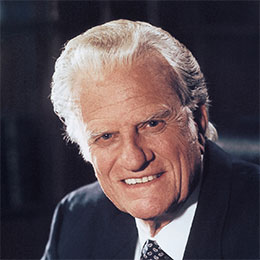Understanding the Role of Physical Therapy in Chronic Pain Management
Published in Health Articles
Chronic pain is a long-term condition that affects millions of people worldwide. Unlike acute pain, which comes from an injury and heals over time, chronic pain lasts for months or even years. Managing it properly is crucial for improving quality of life. One effective approach is physical therapy.
This article will explore how physical therapy helps in chronic pain management and how you can get help to improve your daily life.
What Is Physical Therapy?
Physical therapy is a form of treatment that uses exercises, manual techniques, and education to improve movement and reduce pain. A physical therapist (PT) is a trained professional who works with patients to develop a plan that suits their needs. PTs use different strategies to help individuals strengthen muscles, increase flexibility, and improve their overall well-being.
Physical therapy can be beneficial for people with conditions like:
- Arthritis
- Fibromyalgia
- Back pain
- Neck pain
- Joint injuries
- Nerve pain
By addressing the root cause of pain, physical therapy helps people move better and feel stronger.
How Physical Therapy Helps with Chronic Pain
Physical therapy plays a crucial role in managing chronic pain by addressing its root causes rather than just masking symptoms. Physical therapists use personalized treatment plans and different techniques. They help patients regain function, reduce pain, and boost overall well-being.
Below are some key ways in which physical therapy helps individuals with chronic pain.
Reduces Pain Without Medication
Many people rely on medication to control chronic pain, but this is not always the best long-term solution. Physical therapy provides natural pain relief by improving strength and flexibility. Techniques such as stretching, massage, and heat therapy can reduce discomfort and inflammation.
Improves Mobility and Function
Chronic pain can make it hard to move around or complete everyday tasks. Physical therapy focuses on exercises that increase mobility and help patients regain independence. For example, people with joint pain can do specific movements. This helps reduce stiffness and improve function.
Strengthens Muscles and Prevents Further Injury
Weak muscles can lead to poor posture and increased pain. Physical therapy builds strength in the muscles around the affected areas. This reduces strain and helps prevent more damage. For example, strengthening the core muscles can help with chronic lower back pain.
Provides Personalized Treatment Plans
Every person experiences pain differently. A physical therapist creates a customized treatment plan based on the individual’s needs. This ensures that patients receive targeted therapy that is most effective for their condition.
Teaches Pain Management Techniques
Physical therapists teach patients how to manage pain on their own. They might suggest easy exercises, good posture tips, and relaxation methods to ease discomfort at home. This empowers patients to take control of their health.
Using Special Techniques for Pain Relief
Physical therapists use different techniques to target pain, such as:
Manual Therapy
Hands-on techniques like massage and joint mobilization to reduce pain and tension. These methods help improve circulation, reduce stiffness, and relieve muscle knots that contribute to chronic pain.
Electrical Stimulation
Small electrical impulses are applied to targeted areas to help block pain signals sent to the brain. This technique also stimulates muscle activation, which can help prevent muscle atrophy in patients with limited mobility.
Ultrasound Therapy
Uses sound waves to generate deep heat in tissues, which increases blood flow and promotes healing. This technique is often used for conditions like tendonitis and muscle spasms.
Heat and Cold Therapy
Applying heat helps relax muscles and improve blood flow, while cold therapy reduces swelling and numbs painful areas. Physical therapists use these methods strategically based on the patient’s specific needs.
Aquatic Therapy
Involves exercises performed in water to reduce stress on the joints and provide resistance for muscle strengthening. The buoyancy of water supports movement, making it an excellent option for individuals with severe pain or limited mobility.
Dry Needling
Similar to acupuncture, this technique uses thin needles inserted into trigger points in muscles to relieve tension and improve mobility. It can help reduce pain from muscle knots and nerve-related conditions.
Kinesiology Taping
Special elastic tape is applied to the skin to support muscles and joints, reduce swelling, and improve circulation. This method is often used for sports injuries and chronic pain conditions like arthritis.
Each of these techniques is chosen based on the individual’s pain condition and response to treatment. A physical therapist will determine the best combination of therapies to maximize relief and improve function.
Common Physical Therapy Exercises for Chronic Pain
Every patient has a unique treatment plan, but some common exercises used in physical therapy for chronic pain include:
Stretching Exercises
Stretching helps improve flexibility and reduce muscle tightness. It can also help prevent stiffness and improve mobility. Common stretching exercises include:
- Hamstring stretches
- Shoulder stretches
- Neck stretches
Strength Training
Strengthening muscles helps support joints and reduce pain. Some exercises include:
- Bodyweight squats
- Resistance band exercises
- Glute bridges
Aerobic Exercises
Low-impact aerobic activities improve circulation and reduce inflammation. Common aerobic exercises include:
- Walking
- Swimming
- Cycling
Balance and Coordination Exercises
Improving balance reduces the risk of falls and improves stability. Some exercises include:
- Single-leg stands
- Heel-to-toe walking
- Stability ball exercises
Core Strengthening
A strong core helps stabilize the spine and reduce back pain. Common core exercises include:
- Planks
- Seated leg lifts
- Pelvic tilts
A physical therapist will assess your condition and design a plan that includes exercises suited to your needs.
When to Seek Physical Therapy for Chronic Pain
If you have been dealing with pain for more than three months and it is interfering with your daily life, it may be time to consider physical therapy. Here are some signs that you should get help:
- pain is limiting your ability to perform everyday tasks
- medications are not providing enough relief
- pain is getting worse instead of improving
- you are avoiding physical activity due to discomfort
- experience frequent stiffness or muscle weakness
A physical therapist can evaluate your condition and create a treatment plan to help you regain function and reduce pain.
Take Control of Your Pain
Physical therapy is a safe and effective way to manage chronic pain. It offers a natural approach that reduces discomfort, improves mobility, and strengthens the body. If you or a loved one is struggling with chronic pain, consider reaching out to a physical therapist to start the journey toward better health. Don’t let pain control your life-get help today and take the first step toward relief!
The fun doesn’t end here. Click over to the blog and discover more content that’s just as awesome!























Comments